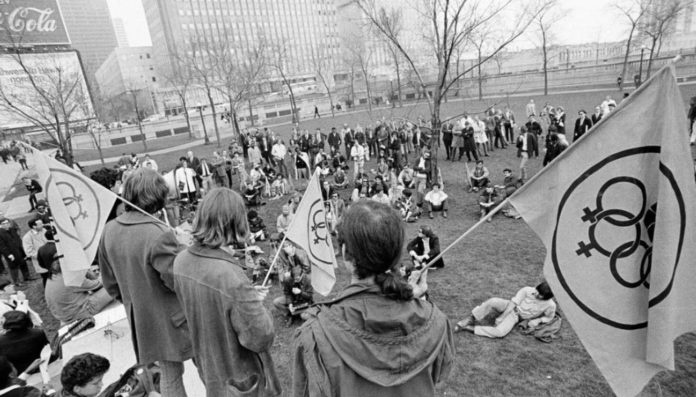
As published in the Chicago Daily News and its sister publication, the Chicago Sun-Times:
Few people could have guessed the impact that a raid at a New York City gay bar would come to have on U.S. history. On June 28, 1969, police raided the Stonewall Inn in Greenwich Village, but instead of complying quietly, the patrons, mostly gay and transgender people of color, fought back. The event became known as the Stonewall Riots, which lasted until July 3, and it launched the modern-day campaign for LGBTQ rights.
“The resulting street melee drew national attention,” Chicago Daily News reporter Susan Root wrote on March 10, 1970, months before the first anniversary of the riots.
In Chicago, a group supporting LGBTQ rights sprouted up on Illinois college campuses in the months following the Stonewall Riots, and Root became one of the first Daily News reporters to track the growing movement. Her March 1970 article delved into how Gay Liberation, the new activist group eventually known as Chicago Gay Liberation, spread from campus to campus.
“Gay Liberation is a new and growing campus phenomenon — a coalition of student groups that aims to foster self-acceptance among homosexuals and understanding by the ‘straight’ majority,” Root wrote.
Thus far, only one university had recognized the Gay Liberation group on campus: the University of Chicago. The organization held bi-weekly lunches at the Blue Gargoyle, a well-known student cafeteria run out of the basement of a Hyde Park church. Though the Gargoyle has undergone some changes and closings over the years, it still exists today as a “hub for community services in order to provide positive opportunities for youth and families on the Southside of Chicago,” according to its website.
The Gay Liberation men and women at the Gargoyle in 1970 looked “no different from the ‘straight’ students around them,” Root observed. There were no differences in the way straight and gay students talked, dressed or acted. “The girls range from plain to delicate to pretty; the men, from hirsute revolutionary to clean-cut fraternity types.” But there was something setting the gay students apart from others: they had “come out” as gay to family, friends and acquaintances.
The UC chapter had 15 active members, 15 “fringe” members and about 100 people on its mailing list, organizer Henry Weimhoff told Root.
“I was very active in civil rights,” Weimhoff said, “and then it dawned on me that I was fighting for the rights of other oppressed minorities when I was a member of an oppressed minority myself.”
At Northwestern University, another group awaited recognition, and informal ones at Southern Illinois, Illinois State and Illinois Wesleyan universities had written to the University of Chicago’s Gay Liberation, hoping to become chapters of their organization.
“I think our movement is one aspect of a larger sexual freedom movement in general,” one UC student explained to Root, “and the fact that we’re not ashamed will bright other people out of their closet.”






